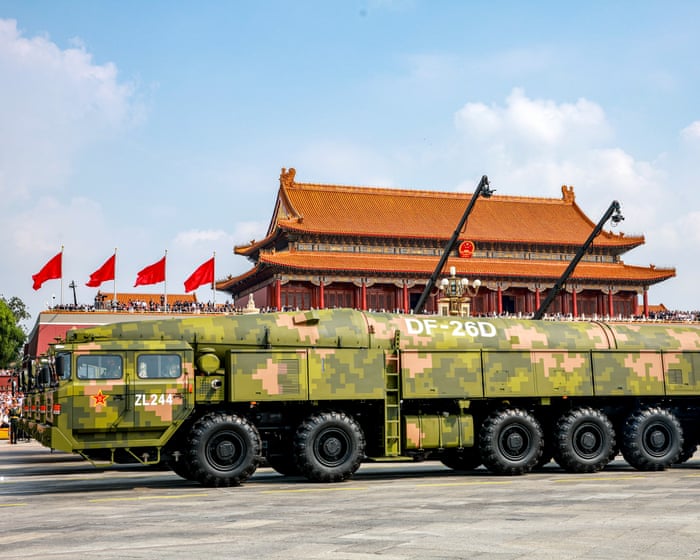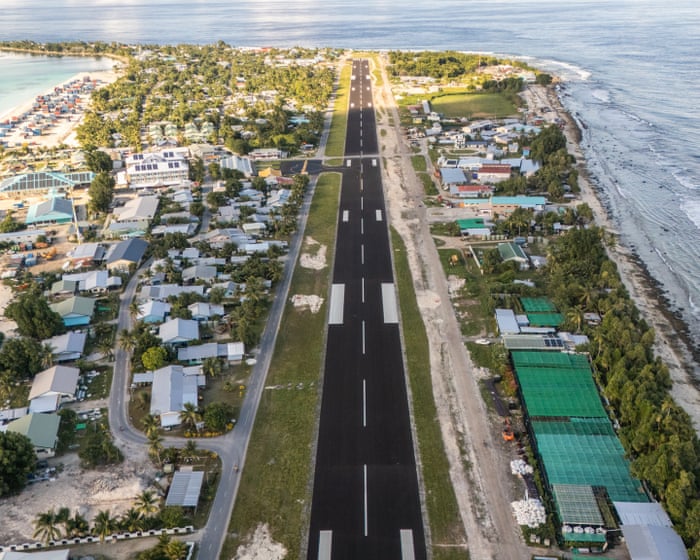Like most people in Guam, Jacqueline Guzman is familiar with the talk of threats from China. This U.S. territory, home to around 170,000 people, sits in the Pacific Ocean. Despite rising geopolitical tensions in the area, many residents are more concerned about the high cost of living than military aggression.
Guzman admits she worries more about paying her bills and trusts the U.S. government to keep her safe. But that sense of security wavered recently when the threat made headlines. During a military parade marking Japan’s defeat in World War II, Beijing showcased new weapons—including one Chinese media called the “Guam Killer.”
Adding to the unease, images of China’s President Xi Jinping alongside leaders from Russia, North Korea, and Iran suggested a new and unexpected danger to some.
Frank Whitman, 71, who lives near the Guam National Guard headquarters, says, “From what I’ve read, just about everyone in this region should be worried. But there’s not much we can do.”
Guam lies about 3,000 kilometers east of China and serves as a key strategic hub for the U.S. in the Pacific, with a significant military presence. Experts warn that if China were to annex Taiwan—as Xi has promised—Guam could become a frontline in any resulting conflict.
China’s display of advanced military technology, including nuclear-capable missiles, anti-drone lasers, and robotic “wolf” units, has drawn attention on the island.
Michelle Tucker, a public affairs officer for the newly formed Joint Task Force-Micronesia, emphasizes that Guam is a critical strategic location for the U.S. in the Western Pacific. She states the military is prepared to defend U.S. territory there.
In response, the U.S. is developing a $1.5 billion integrated air and missile defense system designed to provide full protection around Guam. The project is expected to take 10 years to complete.
Retired U.S. Marine Colonel Grant Newsham advises that while Guam should be aware of the threat, there’s no need for panic. He notes that although China has surpassed the U.S. in some military areas, the U.S. remains a powerful force. Still, he cautions that China could inflict serious damage if it chooses the right time and place to strike.
The sight of Xi alongside North Korean and Russian leaders at the parade also raised concerns. Gina T. Reilly, a communications specialist for a military contractor, says she wasn’t worried about China until seeing Putin, Kim Jong-un, and Xi together. She believes their appearance signals stronger political ties and mutual support, which could reshape global diplomacy and increase the likelihood of coordinated actions—an alarming prospect if it leads to a military alliance.
Local officials, however, continue to stress that…Defending Guam is of the utmost importance to the U.S. military. Jesse Lujan, a Guam senator and chair of the legislature’s federal affairs committee, says the local government receives intelligence briefings from U.S. military officials, and the protection of the island is taken “with the utmost seriousness.”
“Our role is to stay calm, informed, and united, trusting that the proper systems are in place to ensure our security.”
Frequently Asked Questions
Of course Here is a list of FAQs about the topic designed to be clear concise and in a natural tone
Beginner Definition Questions
Q What are Guam killer missiles
A Its a nickname for advanced Chinese missiles like the DF26 designed to hit moving ships and key land targets from very long distances specifically with the US territory of Guam in range
Q Why are they called Guam killers
A Because Guam is a major hub for US military forces in the Pacific These missiles are capable of reaching it from mainland China posing a direct threat to the air and naval bases located there
Q Who should be concerned about these missiles
A Primarily military strategists and governments in the AsiaPacific region especially the US Japan Australia and allies However their existence affects global security and stability which can impact international trade and diplomacy making it a concern for everyone indirectly
Q Are these missiles a direct threat to me if I dont live near Guam
A Not a direct physical threat The concern is more about geopolitical tension An attack could trigger a larger conflict that disrupts global supply chains economies and international security affecting people worldwide
Advanced Strategic Questions
Q What makes the DF26 missile so significant
A Its a dualcapable missile meaning it can carry either conventional or nuclear warheads Its long range and ability to hit moving aircraft carriers make it a unique and potent weapon
Q How does this change military strategy in the Pacific
A It creates an antiaccessarea denial bubble This means China can potentially threaten US ships and bases from far away making it riskier and more complex for the US military to operate freely in the region a concept often referred to as carrier killer capability
Q What is the US or other countries doing to counter this threat
A Responses include developing new missile defense systems investing in hypersonic weapons increasing military presence with allies and developing new strategies to operate within these contested zones




